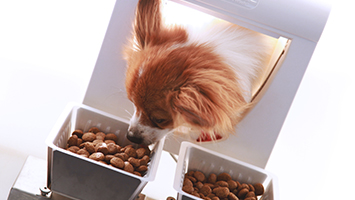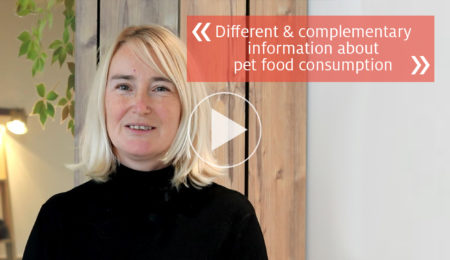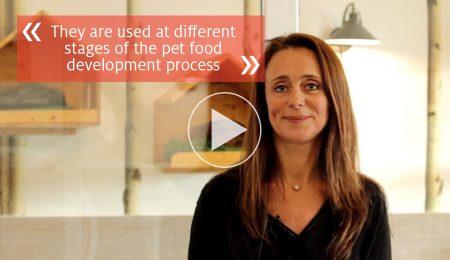Palatability testing conducted with expert cats and dogs is a powerful tool bringing multiple insights on the performance and level of appreciation of a product.
It helps pet food manufacturers making strategic decisions related to product development or positioning versus competition, for instance.
But to be valuable, results must be reliable!
If protocols and panels are not properly controlled, some biases can occur and significantly distort test results.
Luckily, good practices exist to ensure a reliable palatability measurement.
Discover the golden rules to get trustworthy answers from panels made up of these “expert” animals.
Build a panel representative of the market
Pet food market segmentation according to size and breed is a global and lasting trend, especially in dog food.
Beyond marketing consideration, it is true that feeding behaviors can vary according to animal characteristics such as breed and size. It is thus crucial to build a panel representative of the end “consumers.”
- Panel population should reflect the targeted population in terms of allocation between pure and mixed breeds, males and females, and intact and neutered pets.
Work with enough pets
The fewer animals in a panel, the higher the risk of false conclusions!
Whether it is to evaluate cat and dog preferences or to predict the results of a presidential election, answers obtained from panels are always stronger and easier to extrapolate to a whole population when these panels are larger.
Working with a large number of individuals also makes it possible to exclude abnormal answers from statistical analysis without decreasing the sample size too much.
“The more pets, the better!”
- To obtain robust answers, statisticians recommend always working with a minimum of 30 pets in expert panels.
This minimum should be increased up to 100 animals per test when working with in-home panels.
Control the pet’s feeding experience
The more a pet sees a product, the more he can love it … or dislike it.
As for humans, their pets’ preferences are rarely definitively fixed. They can evolve depending on feeding experiences.
To limit food weariness that could distort results, the following is recommended:
- Accustom young pets to high food diversity
- Renew pets regularly
- Avoid feeding the same food over long periods
Choose testing method according to objective
Versus and monadic tests are the most common methods to assess pet food palatability. If both techniques measure the quantity of food eaten by pets at mealtime, they have different applications.
Versus test allows a higher level of discrimination between two products.
- It is adapted to measuring fine palatability differences.
Monadic test assesses a pet food’s acceptability level.
- It is recommended for the final validation of a new formula or for benchmark comparisons.
Secure rigorous meal preparation
Once the method is chosen, it is crucial to carefully handle the meal preparation step.
Several measures such as food anonymization, food tracking, and pet identification ensure both the reliability and the impartiality of the tests.
The use of gloves by animal technicians for food manipulation is also highly recommended. It helps to prevent odor contamination that could affect the palatability of tested products.
Additionally, it is key to use an accurate and regularly checked weighing system to ensure that given quantities are correct.
Ensure testing conditions repeatability
Palatability evaluation is mostly based on the measurement of eaten quantities. However, variability in food consumption is commonly observed in dogs and cats panels.
A first explanation comes from the testing environment. Meal time and duration, diet fed at previous meal, season: such parameters can impact animal feeding behavior and in particular food intake.
- To limit food consumption variability, it is recommended to always conduct testing at the same time, the same place, and for the same duration. Controlling major variations on test environmental parameters such as changes in ambient temperature is also helpful.
Moreover, consumption variability is observed between individuals. Big eater, small appetite: each animal has his own feeding behavior.
- Define individual rations for each animal and follow up individual levels of consumption for potential adjustment.
Limit disturbances during tests
Like human sensory experts, expert cats and dogs must be focused on their task to deliver their verdict.
It is important to provide animals with quiet conditions and to avoid disturbing elements that could affect the execution of the tests and the results.
- Avoid visual contact with between animals and presence of unknown humans during the test
- Avoid strong odors in the testing rooms
- Do not include gestating or lactating animals in the panel
Prevent position and order biases
in versus tests
One of the most common biases observed with palatability testing is position bias. During versus palatability trials, dogs and cats are offered the choice between two products in two bowls. Whatever the products tested, some pets may systematically eat from the right- or left-hand bowl, affecting consumption measurement objectivity.
- It is recommended to regularly switch bowl position to avoid false conclusions in versus tests
in monadic tests
For monadic testing, only one bowl is presented at a time to the animal, so there is no bowl position bias.
However, when several foods are compared in a study on several days, the order of presentation of the tested foods can impact palatability results.
Serving a highly palatable diet to the animals before a less tasty one could change the overall ranking of tested foods.
- It is advised to randomize presentation when comparing several foods in monadic testing
Well-being: Create enjoyable and healthy living conditions
Last but not least, ensuring pets’ well-being within expert palatability testing centers is key, from both ethical and scientific points of view.
Indeed, no reliable information can be expected if animals are stressed.
It is thus crucial that expert cats and dogs enjoy pleasant and healthy living conditions.
“Reliable answers can only be obtained with healthy and happy pets”
- Stimulate and socialize animals through varied activities such as training, grooming, and playing with skilled and devoted animal technicians
- Ban invasive testing or procedures such as frequent blood sampling, trials on drugs, and digestibility tests
- Control animal weight to avoid obesity issues
Take-home points
![[Infographic] – The golden rules for reliable pet food palatability measurement in cat and dog expert panels Discover how to obtain trustworthy answers from pet expert panels](https://www.appetizerblog.com/wp-content/uploads/2020/11/DPF_blog_ensuring_reliable_pal_measurement_header_v1-1250x545.jpg)





* required fields